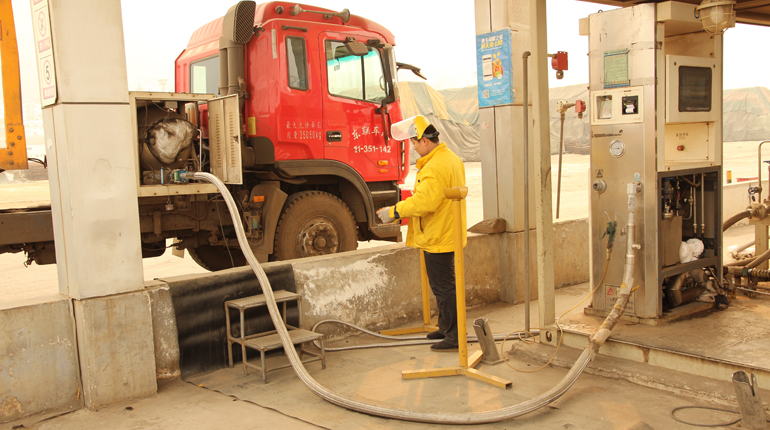 The Ngamia 1 well in Kenya is operated by Tullow Oil and Africa Oil. (Tullow Oil)
The Ngamia 1 well in Kenya is operated by Tullow Oil and Africa Oil. (Tullow Oil)
Kenya is betting it can bring gas production onstream within the next three years despite poor drilling results at its main gas prospect. In the meantime, quick and cheap renewable energy will be developed to meet power demand, a senior adviser at the Ministry of Energy and Petroleum told Natural Gas Daily.
"[We can build] wind and solar hybrids in a short time – in 18 months we can get 200 MW [online] and then hope within three years we’ll be able to develop our own [gas] resources," Daniel Kiptoo, petroleum legal adviser to the cabinet secretary at Kenya’s Ministry of Energy and Petroleum, said on the sidelines of the East Africa Oil and Gas Summit in Dar es Salaam this week.
The ministry had looked at importing LNG to meet Kenya’s burgeoning power demand and replace expensive diesel-fired generation, but the plans were put on hold after Canada’s Africa Oil announced it had discovered up to 1.8 trillion cubic metres of gas in its Block 9 licence area in June 2014. However, disappointing drilling results at a second appraisal well on the Sala prospect put a brake on plans to fast track a 700 MW gas-to-power project in Wajir.
LNG imports remain a possibility, although Kiptoo noted the cost of the infrastructure could be prohibitive. "We’re still looking at an FSRU, but the big question is the cost," he said.
Kiptoo’s predictions for gas development therefore appear somewhat bullish. With both the domestic gas and LNG projects stalled, it looks unlikely gas will supply power plants in Kenya in the mid-term.
Renewable energy – although intermittent – and coal offer more attractive solutions for Kenya to meet its target of bringing more than 5 GW of new power supply online by 2017.
Going it alone
While the price of LNG has dropped dramatically since Kenya signed a preliminary agreement with Qatar in 2014 to import 1 mtpa of the fuel, Kenya is reluctant to rely on the international gas markets in the long term.
"We won’t be able to get more than a five-year contract without a renegotiation clause, so in the future we wouldn’t know [the price]," Kiptoo told NGD.
He added that it would be a gamble because, after buying the LNG and securing a fixed tariff for the next five years, "we would need to ensure that we develop our own gas to replace this".
The ministry launched a tender in 2014 to install an FSRU and build an 800 MW power plant at Dongo Kundu in Mombasa. However, only two of the 10 short-listed companies submitted final bids for the project and neither met the government’s timeline for startup within 18 months. The ministry is not negotiating with FSRU suppliers and would re-tender for an integrated LNG-to-power project if it decided to go down the LNG route again.
"We feel that the safer option [is] if we accelerate exploration [...] the key thing is proving the gas, once the gas is proven the rest of the back-to-back arrangement can fall in place," said Kiptoo.
Africa Oil and its partner United States-based Marathon Oil are expected to shoot more seismic on Block 9 in the third quarter of this year.
The Sala gas discovery is not the only potential source for domestic gas production. At the end of 2015 the Ministry of Energy granted Zarara Oil & Gas an 18-month extension on its exploration licences for blocks L4 and L13 to allow the company to drill a second well on the Pate gas discovery. The Pate find was first reported by Shell and BP in 1971.
"Zarara’s drilling strategy is to fully appraise the Pate natural gas discovery and then, in partnership with leading electrical power generation partners, undertake a phased development of up to 1 GW of electricity generation capacity nearby at Port Lamu," the company said in a statement last December.
The +5000 plan
It looks as if gas will no longer play a role in helping the government meet its "+5,000 MW" initiative – an ambitious programme launched in 2013 with the aim of bringing 5 GW of new power capacity online by 2017. As of the end of March 2015, Kenya had an installed generation capacity of only 2.3 GW, or 0.049 kW per capita.
The government is instead planning investments worth an estimated $13.7 billion in wind, solar, geothermal and coal projects – although only a fraction of these will be online before the end of the year.
Construction is just starting on a controversial 985 MW coal-fired power plant in Lamu, which is being developed by Chinese-Kenyan joint venture Amu Power Co.
The Energy Regulatory Commission is also planning to develop 2.2 GW of geothermal generation, 650.4 MW of wind, 133.0 MW of thermal, 550.3 MW of hydro, 22.4 MW of cogeneration and 52.2 MW of solar capacity, with the addition of 400 MW of electricity imports from Ethiopia in the medium term.







